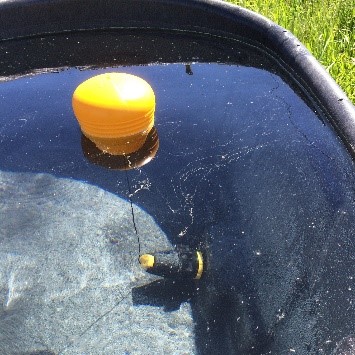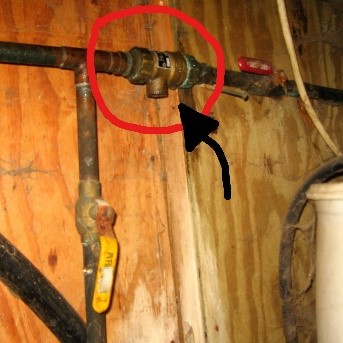By Sonia Howlett, VT Agency of Agriculture, Food & Markets - June 2022
Attention dairy farmers: Did you know that it is possible for your livestock watering systems to contaminate your farm’s potable water supply?
Under certain conditions, submerged valves in watering tubs can allow contaminated water back into the pipes/hoses that are bringing clean water out to the animals. This “backflow” could result in contamination of your farms’ source of potable water, which would be really bad news for animal health and human health – and also your milk quality and ability to pass your milk inspection.
Federal Pasteurized Milk Ordinance Standards require that “backflow preventers” with atmospheric vents are installed as part of livestock watering systems with submerged inlets to prevent contamination from occurring on a potable water supply. These Standards also state that washing and sanitizing of milking equipment must be from a potable water supply.
Many experts recommend submerged inlets for watering livestock (such as the Jobe Megaflow float valve or Apex float valve) because compared to other valves/floats they provide higher water flow, more effectively prevent overflow, and are more “cow-proof”. You just need to make sure you install an acceptable backflow preventer as part of that system – and make sure it has an atmospheric vent that helps prevent contamination even if the internal valve fails.
If a dairy farm’s water system has a submerged inlet without an acceptable backflow preventer in use, it is a 5-point debit on any milk inspection or rating. For context, a farm can only lose a total of 10 points without failing their Grade A rating and losing their ability to ship milk out of state– so that is a serious issue!
If your livestock watering tub is fed with a non-submerged inlet-style float or a non-potable supply or tank, a backflow preventer is not specifically required because the risk of contaminating a potable water supply is lower – but is probably still a good idea.
Approved examples of backflow preventers with atmospheric vents include WATTS 9-d, WATTS 009 or WATTS 909. If you wish to use a different kind of backflow preventer, make sure it has an atmospheric vent and ask your farm milk inspector to verify that it is acceptable prior to installation.
To contact your milk inspector or to learn more about what you will need to have in place prior to a milk inspection, email AGR.dairy@vermont.gov or call 802.828.2433.
The Agency of Agriculture, Food and Markets has a Pasture and Surface Water Fencing program that can provide grant assistance to help farmers install infrastructure that improve or expand farms’ grazing practices, including pasture livestock watering systems. For more information or to apply, contact Mary Montour at (802) 461-6087or Mary.Montour@vermont.gov
Photos:

 Many farmers and experts strongly recommend submerged float valves, such as the Jobe Multiflow (left), for pasture watering systems. However, backflow preventers with atmospheric vents (right) must be installed as part of the watering system to ensure that these submerged inlets do not contaminate potable water supplies.
Many farmers and experts strongly recommend submerged float valves, such as the Jobe Multiflow (left), for pasture watering systems. However, backflow preventers with atmospheric vents (right) must be installed as part of the watering system to ensure that these submerged inlets do not contaminate potable water supplies.

